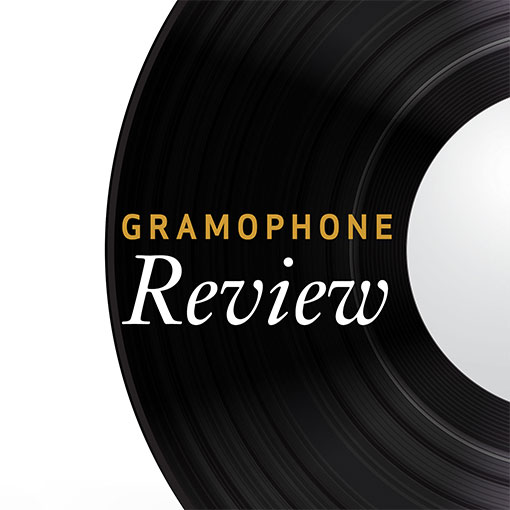Beethoven Piano Sonatas
View record and artist detailsRecord and Artist Details
Composer or Director: Ludwig van Beethoven
Label: Philips
Magazine Review Date: 11/1987
Media Format: CD or Download
Media Runtime: 52
Mastering:
DDD
Catalogue Number: 420 153-2PH

Tracks:
| Composition | Artist Credit |
|---|---|
| Sonata for Piano No. 3 |
Ludwig van Beethoven, Composer
Claudio Arrau, Piano Ludwig van Beethoven, Composer |
| Sonata for Piano No. 8, 'Pathétique' |
Ludwig van Beethoven, Composer
Claudio Arrau, Piano Ludwig van Beethoven, Composer |
Composer or Director: Ludwig van Beethoven
Label: Philips
Magazine Review Date: 11/1987
Media Format: Vinyl
Media Runtime: 0
Mastering:
DDD
Catalogue Number: 420 153-1PH

Tracks:
| Composition | Artist Credit |
|---|---|
| Sonata for Piano No. 3 |
Ludwig van Beethoven, Composer
Claudio Arrau, Piano Ludwig van Beethoven, Composer |
| Sonata for Piano No. 8, 'Pathétique' |
Ludwig van Beethoven, Composer
Claudio Arrau, Piano Ludwig van Beethoven, Composer |
Composer or Director: Ludwig van Beethoven
Label: Philips
Magazine Review Date: 11/1987
Media Format: Cassette
Media Runtime: 0
Mastering:
DDD
Catalogue Number: 420 153-4PH

Tracks:
| Composition | Artist Credit |
|---|---|
| Sonata for Piano No. 3 |
Ludwig van Beethoven, Composer
Claudio Arrau, Piano Ludwig van Beethoven, Composer |
| Sonata for Piano No. 8, 'Pathétique' |
Ludwig van Beethoven, Composer
Claudio Arrau, Piano Ludwig van Beethoven, Composer |
Author: Richard Osborne
To take the most obvious example, Arrau plays the Pathetique's central Adagio cantabile not as salon music but as a piece that is noble, hieratic, balm-dispensing. In his hands it is the lyrical embodiment of that fundamental seriousness of spirit that has long commended Beethoven to fellow men and women in a way that no other composer quite manages. Then there is the Rondo, perfectly paced as a moderated alla breve, in which the spirit of the earlier movements, along with their thematic and stylistic imprints, is at once recalled and integrated into a new whole. He realizes in full the music's grace and energy, its predisposition to dance, yet this new vision of rhythmic emancipation is both indebted to and in some respects confimed by the matrix from which it springs: the complex harmonic structuring of the Allegro di molto and the Adagio cantabile's yearning for stasis and song. Here is tragic pathos writ large, the very embodiment of the romantic quest. As Fitzgerald writes at the end of his finest novel: ''So we beat on, boats against the current, borne back ceaselessly into the past''.
Apart from a small fluff in the rising chromatic treble towards the end of the first movement's initial exposition, Arrau's rendering of all this is masterly, in sonority and rhythmic projection as well as in mature cerebration. Listen to the trombone-like utterances of the opening Grave, the complex orchestration of the Allegro di molto, the balm of the Adagio cantabile, and the perfectly matched texturing of the finale. The recording, too, is splendidly full-bodied. Arrau's breathing is audible but not intrusive; and only occasionally does the power of the playing threaten to strain the piano's resources, setting off edgy resonances around powerfully struck chords.
As for Op. 2 No. 3, no younger pianist would care to play it like this for fear of being thought less than technically fluent. Arrau, who decades ago established his right to be thought one of the greatest of all masters of the keyboard, can afford to make Beethoven sound awkward, truculent, cussed, and occasionally deeply troubled. Perhaps, here and there he is tempted to leave himself a bit more time than he and the music really need, but we listen to the performance not for its prestidigitation but for the insights it brings. The long-term control is unfaltering, as is his revelation of Beethoven's partly traumatized vision. The coda of the slow movement is extraordinary. It is as though Arrau, having mastered the 32 sonatas is now starting again on a quest that turns No. 3 into No. 35. The shock of the interrupted cadence in bar 372, the declamatory eloquence of the bars that follow, the balm of the quiet subdominant A in the movement's penultimate bar: these things are realized by Arrau in a manner we would think of, in Beethovenian terms, as being markedly 'late'. Op. 2 No. 3 is billed as being in C major, but it is the complex web of minor keys in the first movement's second subject group that Arrau concentrates on in the wake of rather a circumspect account of the jaunty tonic-dominant opening.
I can think of no other pianist currently playing and recording Beethoven who could couple these sonatas and make the one so explicitly the other's predecessor, both intellectually and emotionally. As a Beethoven pianist Arrau is nowadays in a class of his own.'
Discover the world's largest classical music catalogue with Presto Music.

Gramophone Digital Club
- Digital Edition
- Digital Archive
- Reviews Database
- Full website access
From £8.75 / month
Subscribe
Gramophone Full Club
- Print Edition
- Digital Edition
- Digital Archive
- Reviews Database
- Full website access
From £11.00 / month
Subscribe
If you are a library, university or other organisation that would be interested in an institutional subscription to Gramophone please click here for further information.





